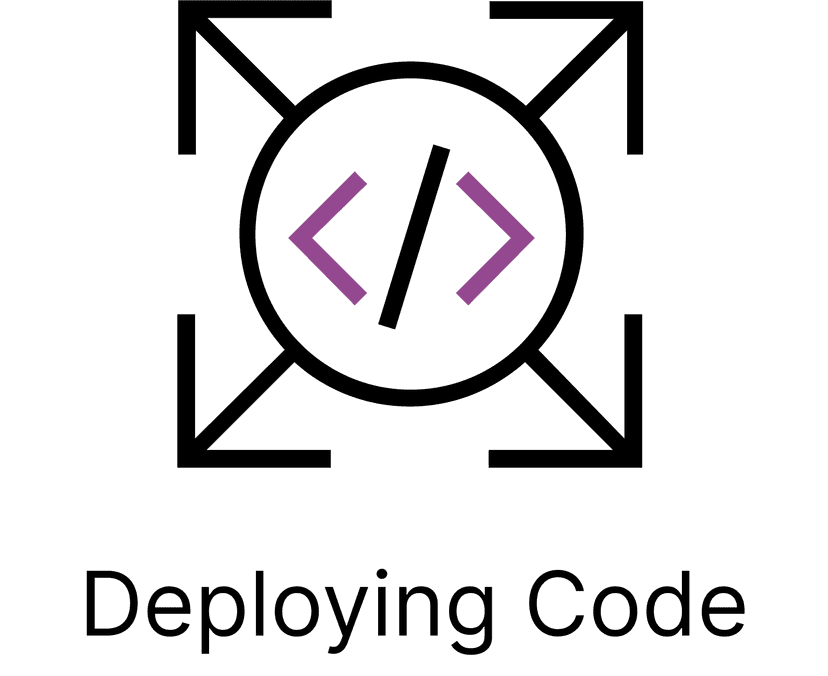Deploying Code

What is deploying code?
Definition
Deploying code is the process of moving code changes from a development environment to a production environment, where it becomes accessible to users. This typically involves a series of steps, including testing, building, and releasing the code.
Analogy
Imagine you're an artist working on a painting. You start by sketching your ideas on a canvas in your studio (the development environment). Once you're satisfied with your work, you move the painting to a gallery (the production environment) for the public to see and enjoy. The process of moving the painting from your studio to the gallery is similar to deploying code.
In other words
Deploying code is the process of moving your code from the development stage to the production stage, making it available for users.
Why is deploying code important?
It's one thing to know what deploying code is, but that is worthless if you don't know why you should know what a code repository is in the first place. Let's break down the importance of this tech term based on two high-level categories. We'll walk through an explanation as well as provide a score, 1-10, that shows you how much you should care about deploying code.
Pre-Product: 1/10
If you do not have a product yet, deploying code might not be your top priority. You're likely in the ideation phase or almost ready to start development. However, it's still useful to understand the concept of deploying code, as it will become important once you start developing your product and need to release it to users.
Live Product: 6/10
If you have a live product, deploying code is an essential part of your business. It ensures that your users have access to the latest features and bug fixes. Properly deploying code helps maintain the quality of your product, reduces downtime, and can even improve the overall user experience.
Examples tools and practices for deploying code
So you know what deploying code is, by definition. You know if you should care about it or not depending on your situation as a business/company/product. To dig in deeper, we will walk through some tools and processes so we can make sure you really have a solid grasp on deploying code.
Continuous Integration and Continuous Deployment (CI/CD)
CI/CD is a popular practice in modern software development that automates the process of deploying code. Developers integrate their code changes into a shared repository, which triggers an automated build and test process. If the tests pass, the code is automatically deployed to the production environment. This approach ensures that code changes are always tested and deployed quickly, minimizing the risk of errors and downtime.
Deployment Tools
There are many deployment tools available to help automate and streamline the process of deploying code. Some popular examples include Jenkins, Travis CI, and CircleCI for continuous integration, and tools like AWS CodeDeploy, Heroku, and Docker for deployment. These tools help manage the deployment process, making it easier and more efficient for developers to release their code.
Key Takeaways:
- Deploying code is the process of moving code from development to production, making it available for users.
- If you do not yet have a product, deploying code might not be your top priority, but it's still useful to understand the concept.
- If you do have a product, deploying code is essential for maintaining quality and ensuring users have access to the latest features.
- CI/CD and deployment tools are examples of how deploying code can be automated and streamlined.

